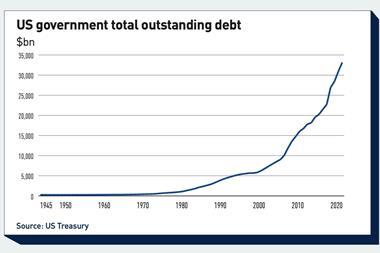Austrian pension funds and private equity are not an obvious fit. For a start - in terms of private equity investing as a whole - Austria comes near the bottom of the European league. Just 0.051% of Austrian gross domestic product was invested in private equity in 2003, the latest year for which figures are available, according to the European Venture Capital Association.
This put Austria behind countries such as Poland, Switzerland and Portugal and ahead of only Hungary, the Czech Republic, Greece and Slovakia, in terms of countries for which data was available.
Furthermore, within this small
private equity market, the involve-ment of pension funds is fairly insignificant because the pension fund concept itself is still very new in Austria. Only about 15% of employees are covered by occupational pension plans, although recent legislative changes have prompted an increase in their popularity.
“Pension funds in Austria are still very small in terms of value – they are worth only e10bn in total,” says Hans Lovrek, an independent adviser on private equity who runs Commenda Private Equity Consulting. “Furthermore, the average equity exposure is very small, probably only about 15%.”
This is partly a result of the current legislation, which places limits on the different asset classes in pension funds. Fixed interest investments are by far the dominant class.
And with a culture which is wary of listed equities, it is not surprising that there is even less interest in private equity. To make things even more difficult, the Austrian private equity market itself is relatively undeveloped, and the value of transactions is currently very small.
“Pension funds are not allowed to use very much private equity within their overall portfolio,” says Harald Thury, director and head of institutional clients, Kathrein & Co Privatgeschäftsbank.
“At the moment the average figure is fairly low – under 2-3% of the whole portfolio. What funds have done in the past few years has been to raise their allocation to equities. They have begun to invest in hedge funds, mortgages and real estate, but as a part of their portfolio, private equity is still relatively low.”
“The Austrian venture capital market is fairly young, so we are still building up interest,” says Gerhard Fiala, managing partner, Pontis Venture Partners.
The newly-established fund management company has just closed its first fund, raising e30m, but no pension funds have invested. The fund will invest in new and expanding life sciences and IT companies.
“The private equity market is more or less dominated by the banks,” says Fiala. “Austrian pension funds are rather conservative when it comes to investing in this asset class right now, so there is a lot of educating to be done. The pension funds have to be convinced that this would make sense in terms of portfolio diversification. In fact, private equity funds are the ideal investment from the long-term perspective, so it is hard to understand why pension funds are so conservative on this issue.”
3i in Austria does not have any Austrian pension funds as investors in its funds. Even so, Gert Reinhard Jonke, senior adviser, 3i in Austria, agrees that things are moving in the right direction.
“A couple of years ago, things were not so good because of the 2000 bubble,” he says. “But there is now general interest in private equity. With five to 10 big buyouts per year in Austria, there is some interest in that sector. And the venture capital market is coming back, mainly through interest from banking institutions.”
Several of the biggest pension funds have started a private equity portfolio in recent years, including APK Pensionskasse (see box).
However, according to Thury, the biggest restriction on the use of private equity is still the existing law.
This obliges pension funds to invest primarily in cash, bonds, loans, equity and real estate. But pension funds can invest up to 5% of their assets directly in alternatives (including private equity funds) as long as the investment vehicle is issued by an OECD-based corporation.
Thury estimates that those Austrian pension funds which have invested in real private equity risk capital have done so for up to 2% of their portfolios.
“But the easiest way for pension funds to use private equity - and alternative investments generally - is to invest in structured bond products with a capital guarantee,” says Thury. “This means they get the performance of the private equity portfolio, but with the assurance of minimum capital preservation, although they have to pay the insurance cost. And the capital guarantee means that the investment can be classified within the bond element of the portfolio.”
However, from September, when a new pension fund law comes into effect, the limit for alternative investments will be increased. Generally, there will be no asset allocation limits, but a ‘prudent person rule’ will be in place, depending on the quality of the risk management tools used.
The evaluation of ‘quality’ is currently carried out by the regulatory authority, the FMA. Thury says that many details concerning the future workings of the new law are still very uncertain.
“It is difficult to evaluate how the changes to pension fund law will work,” says Thury. “But I don’t think the new legislation will affect things much.”
Lovrek points out another continuing problem.
“Legally, all investments must potentially be valued every second week,” he says. “Obviously, this is not really feasible with private equity. But it’s fair to say that pension funds do recognise the asset class, and want to invest in it. It certainly is on their radar screens and they do have some kind of long-term programme.”
The code of investor relations conditions published in July, regulates the behaviour of both investors and fund management teams. The code focuses on private equity and covers the process of fundraising and management of funds, with guidelines on dealing with conflicts of interest. Lovrek considers that such an infrastructure for safe investing will be a real boost for Austrian pension fund investors.












No comments yet